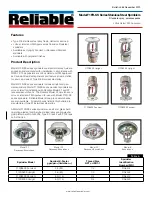
Design Guide for Hazardous / Industrial
Self-regulating trace heating systems
21-5400-7D0001/-
05/2023-EHT-466854
Notice Technical data subject to change without notice.
No claims for damage arising from alternations, errors or misprints shall be allowed.
Page 28 / 40
Installation self-regulating trace heaters on pipes and vessels
Preparation
Before installing any electric trace heating, the person installing must check if the trace heating has been designed and planned correctly. It is
particularly essential to verify the following points:
complete project planning documentation, operating instructions and installation instructions
correct selection of the trace heater and accessories with respect to:
calculation of heat losses
max. permissible operating temperature
max. permissible ambient temperature
temperature class
heating circuit length
Before installing, make sure that all piping and equipment is properly installed and pressure tested.
Required tools / equipment
The following tools are required for installation of the BARTEC Self-
regulating trace heating systems:
Wire cutters
Insulation resistance meter with a minimum testing voltage of
500 Vdc and a maximum testing voltage of 2500 Vdc.
Unrolling the trace heater
WARNING
Risk of short circuit and/or material damage. Keep the trace heater
ends dry before and during installation.
Unroll the required trace heater in a straight line and cut to the
correct length. Cut off the trace heater ensuring a straight cut.
Do not bend or pinch the trace heater. or pull it over sharp
edges.
Installation on pipes
This step is necessary for plastic pipes only since plastic pipes
conduct heat loss efficiently than metal pipes do. For metal pipes
refer to step 4.
Place aluminium tape where the trace heater will be attached for
better heat distribution.
CAUTION
Risk of injury and/or material damage. Never step on or drive over the
trace heater. Do not use it as a loop for stepping on.
Install the trace heater in a straight line along the pipe. This
saves time, helps to avoid installation mistakes and prevents
damage to the trace heater during the thermal insulation work.
4
3
2
1















































